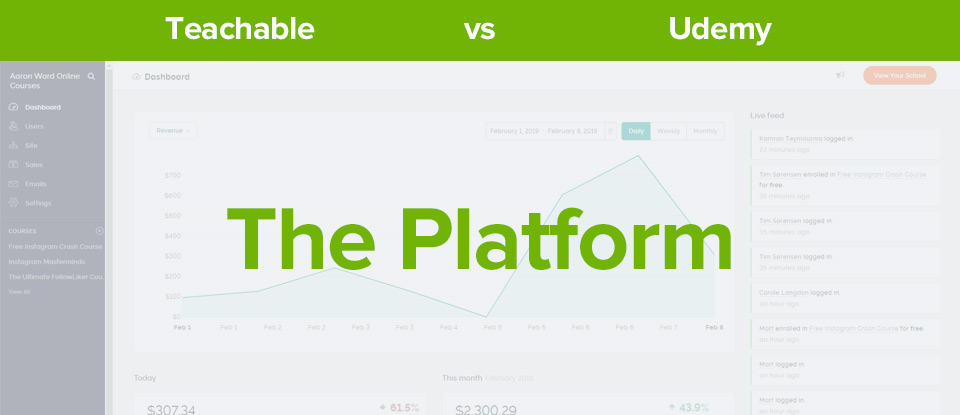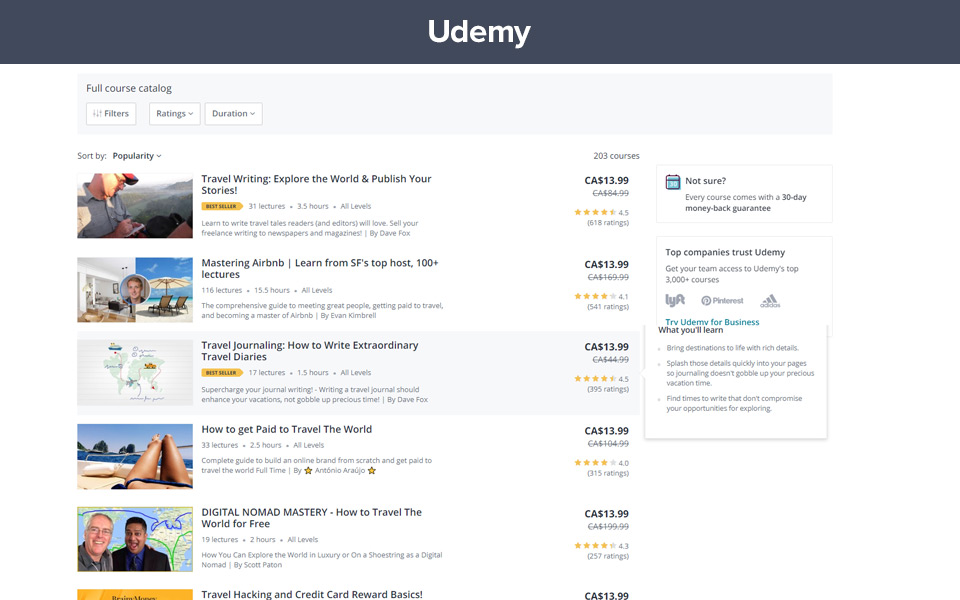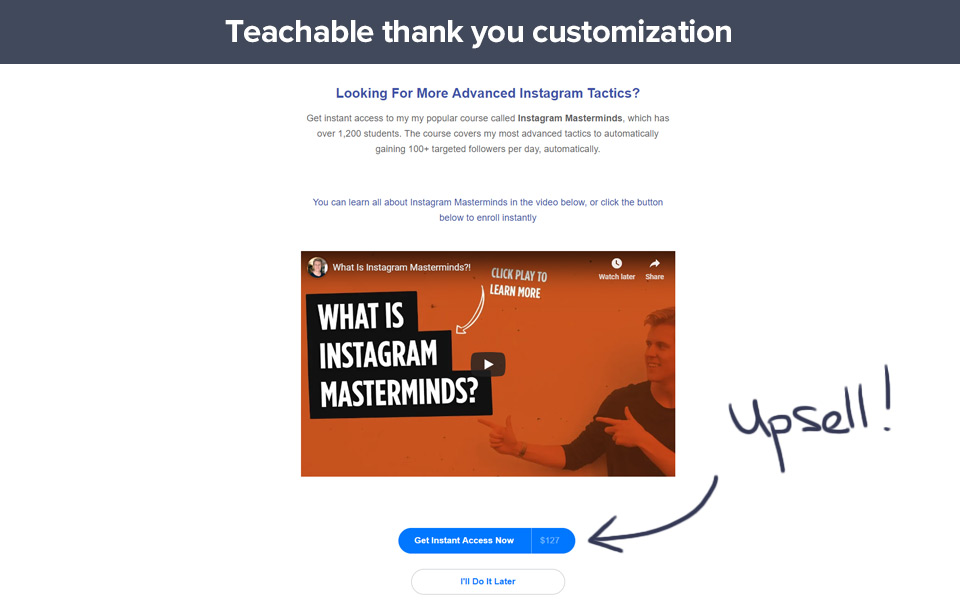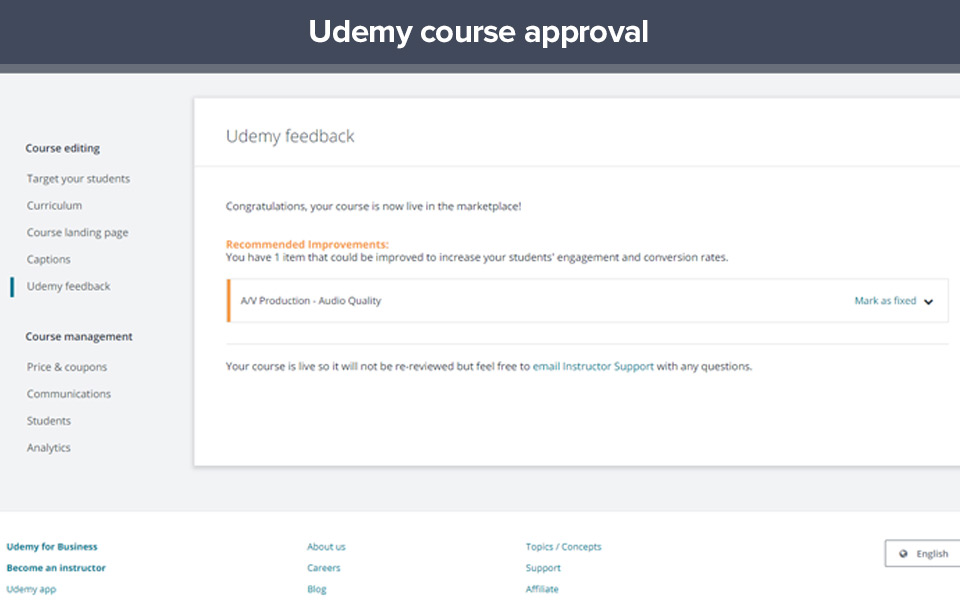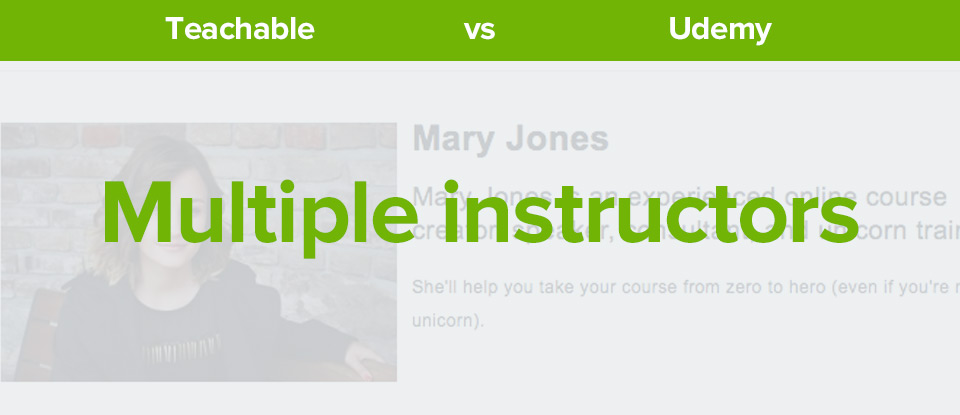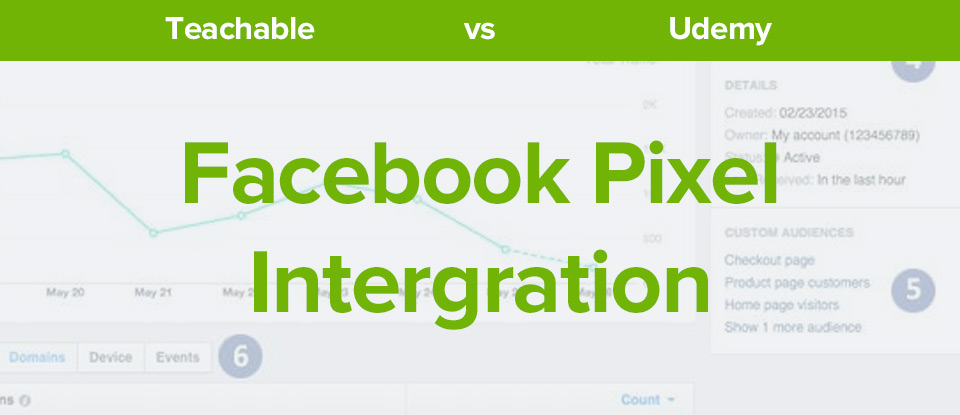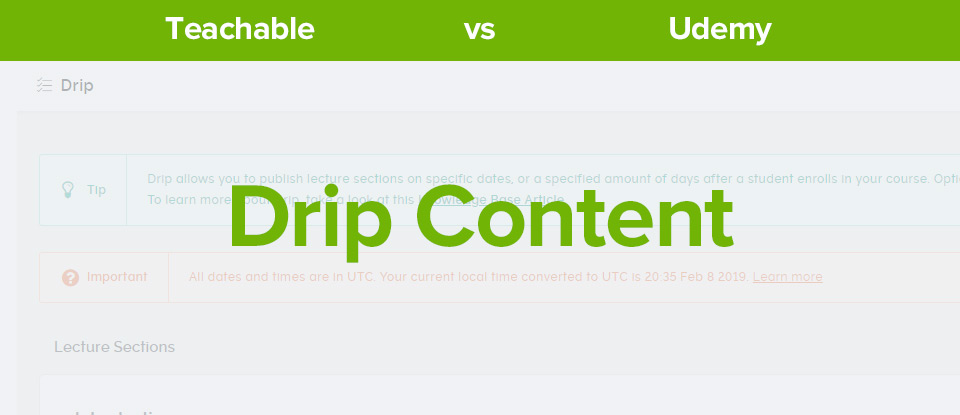Skillshare is the most comparable online course marketplace to Udemy. Both platforms market your online course to the masses and pay instructors a course revenue share monthly. That’s about all the similarities in the Udemy vs. Skillshare comparison, really. They are pretty different platforms.
So, let’s say you are a new instructor and trying to decide which is best to start with. Or, perhaps you are already creating courses on one platform and considering hopping to the other. What would the impact be on your online course business and the way you go about it?
Udemy vs. Skillshare – 5 Key Differences
A comparison of Udemy vs. Skillshare’s features for instructors is pretty straightforward. In this article, we’ve outlined the 5 biggest differences between the two platforms that matter to online course instructors (not to students).
Instructor Payout
At the end of the day, teaching online is about making money, right? Well, actually, teaching on Skillshare may not necessarily be “all about the money”. The mission of the Skillshare platform is to provide affordable and accessible education to all. The company asks of its instructors to “give back”. You might translate that into “don’t expect a get rich scheme”.
So let’s just cut to the chase and compare Udemy vs. Skillshare payouts. Udemy has a fairly transparent, widely known, consistent instructor payout formula, based on its “pay per class” sales model:
- 50% of revenue for organic course purchases
- 97% of revenue for courses purchased through direct instructor link
- ~ 25% of revenue for affiliates sales
How much can Udemy instructors make? You’ve no doubt read and heard stories about the earnings potential on Udemy, particularly for instructors in the tech field. We at Teachinguide even attempted to estimate what top Udemy instructors could make earlier this year. At the top instructor echelon course income can reach hundreds of thousands of dollars a year.
It’s fair to say that if you are a serious and very good instructor on Udemy and you put in the work, you have a shot at earning a decent living, or at minimum some decent passive income, selling online courses. A large part of this is due to Udemy’s huge audience of some 25 million students and its growing global reach and brand recognition which drives a ton of traffic to the platform. The platform also has a very extensive affiliate network that instructors can leverage to boost sales.
Skillshare, however, has a very different instructor payout scheme. As we said before, the fact that the platform’s mission is to make education accessible to anyone by providing affordability should give you a hint about the relative potential payout of Skillshare vs. Udemy. The website reads “Why Teach on Skillshare? It’s a great way to earn money, build your online following, and give back. Top teachers make $100,000+ a year.” We’re not scoffing at earning $100,000 a year, that’s great money. But top Udemy instructors have added another three zeros to that number.
So what is Skillshare’s payout scheme? Skillshare is a subscription-based website, and the subscription fee is relatively low at about $12 per month for access to all “Premium” courses. For that amount, students can watch as many course videos for as many minutes as they like that month.
Once an instructor’s course has been watched for 30 minutes he/she becomes eligible to earn a payout. Thereafter, instructors are paid based on Skillshare’s algorithm that calculates payouts based on how many paying students enrolled in your courses versus all other courses, a variable percent of the subscription revenue for the overall Skillshare platform that month (30%-50%), and the number of minutes watched for your courses. The focus of the Skillshare platform payout is different in that it is a community-based platform with a pool of funds that fluctuates each month to be divided up.
Estimates that we have seen roughly work out to between $3-$5 per hour of course watched per student. So for a 3 hour course, you might make $10-$15 per student. Instructors can also earn $10 per student referred using their personal referral link. Finally, instructors can earn a $50 gift card each time they refer another teacher to the platform who creates a course within 30 days.
Skillshare’s payout scheme seems a little more complicated on the surface than Udemy’s. But if you think about it, with all of Udemy’s course discounting, the free coupon campaigns to get enrollments, affiliate marketing, etc. you never quite know what you’ll earn from Udemy either.
Course and Instructor Competition
Clearly on Udemy with its 100,000+ courses, as an online instructor you are likely to be competing with hundreds of other courses in your chosen topic area. So as an instructor, you have to think a lot about marketing and promoting your course, optimizing for Udemy search rankings, and getting great reviews quickly to convince a student to take your course instead of the many alternatives. That said if you manage to find a decent niche for an up and coming topic (increasingly rare) or do what it takes to develop a student following (virtuous circle!), you’ll do fine.
Versus Udemy, Skillshare is what we might call “less cutthroat” when it comes to competition with “only” 29,000 courses. With less competition on Skillshare, instructors who publish a lot of courses and develop a student following can do quite well. In addition, since students have paid for a monthly subscription that allows unlimited access to courses, you have a better chance of students enrolling in your course because they don’t have to pay anything extra to take it. But you still have to get them to watch minutes of your course to earn money. So marketing and promotion is still a necessary evil despite the lesser competition.
Also on Skillshare, a lot of the courses are more “crafty”, along the lines of art or calligraphy. So if you are in a creative field, you may face stiff competition.
Community and Support
Community is, as Skillshare describes it, “the pulse of Skillshare”. It has an active community of students who share their projects with each other and provide feedback to each other. The bond within the teacher-student community is much stronger on Skillshare due to the hands-on nature and interactivity of course projects.
For new teachers, Skillshare promotes a 30-Day Teaching Challenge which gives prospective teachers milestones, reminders, tools and encouragement to design and upload a course within 30 days. It also has a great online video course for new instructors that teaches you how to get going, as well as a Teacher Handbook. The platform also helps teachers develop a following by notifying students each time their instructor publishes a new course. The whole “new instructor” thing just seems a little less “scary” on Skillshare.
Udemy does have Facebook groups, instructor conferences and its Studio U instructor forum with about 20,000 instructors on it. The platform is so popular, you are bound to find help somewhere if you look for it (like on Teachinguide!). That said, there isn’t much of an instructor-student community and virtually no student community. There’s no place to get feedback on work or projects either. Finally, the customer/instructor support on Udemy has met with mixed reviews as well.
Restrictions and Eligibility
Both platforms have restrictions concerning minimal course content and parameters. However, Skillshare does not require its prior approval before instructors can upload their courses to the platform. It relies heavily on the community aspect of the platform to ensure there are no “cheaters” when it comes to quality, adhering to course requirements, etc.
Udemy requires background checks and course quality approval before you can upload your courses.
Skillshare has topic restrictions. Prohibited topics include those focusing on passive income strategies, courses about teaching on other learning platforms, topics related to romance and relationships, and courses on how to resell existing products/services. When we did a search for “passive income” on Udemy, there were 883 search results. “Drop shipping” turned up 1,100 course results. In this sense, Udemy is much more accommodating when it comes to defining what “learning” is. This is one reason it boasts so many more courses (and users) than Skillshare.
Types of Courses and Course Content
Did you know that many Udemy courses like this one about Tableau 10 are also on Skillshare? (Note that this course has 4,247 students enrolled on Udemy vs. 285 students on Skillshare)
Both platforms have a wide range of instructors in terms of experience and background. One key difference between Udemy and Skillshare is that on Skillshare courses of less than 30 minutes are allowed, even encouraged. Skillshare also encourages instructors to create learning in bite sized classes, for instance with about 10 minutes of instruction and then a project assignment. There are courses as short as 12 minutes. Some Udemy instructors will take their longer course and break it down into smaller Skillshare courses.
On that note, another key difference between Udemy and Skillshare course content concerns the nature of learning. All Skillshare courses have at least one project. The emphasis of instruction is on learning by doing and students are encouraged to upload their projects to share and get feedback. This means as an instructor, you must be willing to create courses and projects fairly frequently to teach your subject matter.
Udemy, on the other hand, allows for simple talking head and PowerPoint instruction. Some instructors may prefer this more passive approach to teaching. Students may prefer it as well. That said, Udemy allows instructors to incorporate quizzes into their courses which does help engage students somewhat.
Finally, when it comes to foreign language course instruction and content, Udemy wins hands down. Skillshare is very English language centric.
Udemy vs. Skillshare – the Verdict
In the end, these comparisons don’t matter all that much to your opportunity to sell courses through an online marketplace. You can become an instructor on both platforms if you wish and repurpose the same content. There is no exclusivity. However, here are some key issues to consider when choosing one platform over the other:
- You will have to change the format somewhat to accommodate Udemy vs. Skillshare. If you don’t like creating projects or many many courses (to make more money), the you should avoid Skillshare and stick to Udemy’s talking heads powerpoint “mashup” format.
- If your goal is to make money a good deal of money online, it is probably better to start on Udemy. You have control over your course pricing and your payout is based on transparent, simple math so it is easier to set earnings goals and work towards them. Again, you just have to look at the top earners to see there is more potential on Udemy.
- If you want to dip your toe in the water and experiment with online teaching quite simply, perhaps by creating a very short module of less than 30 minutes, Skillshare is probably lower risk (and lower pay). Then you can migrate to Udemy once you are feeling more confident and ready to spread your wings. Also if you don’t want to have to think a whole lot about promotion and marketing, Skillshare may be better given its lesser competition.
- If however, you are developing a course in any of the Skillshare restricted areas – which by our small search experiment eliminates several thousand instructors – or your primary language is not English then Udemy is for you and your students.
In the end, you might as well publish on both platforms and see which one works for you. You certainly won’t lose money!





